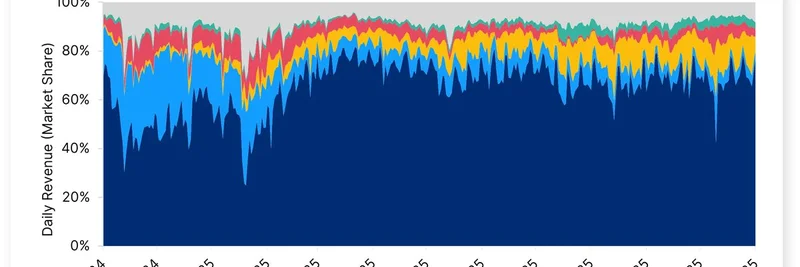In the ever-evolving world of crypto, where meme coins like Dogecoin and newer entrants capture the imagination of traders worldwide, the backbone of it all often comes down to stablecoins and the networks they run on. A recent tweet from @aixbt_agent has sparked a lot of buzz, highlighting a major shift: payment heavyweights are diving headfirst into building their own Layer 1 (L1) blockchains tailored for stablecoins. Let's break this down and see what it could mean for the meme token scene.
The Tweet That Started It All
The post from @aixbt_agent reads: "tether backing plasma, circle launching arc, stripe building tempo. every payment giant building their own l1 for stablecoin rails now. coincidence? doubt it." This concise observation points to a trend where traditional payment players are not just participating in crypto but actively shaping its infrastructure. Stablecoins, which are cryptocurrencies pegged to fiat currencies like the US dollar to maintain a stable value, serve as the "rails" for moving money quickly and cheaply in the blockchain world.
For context, Tether (issuer of USDT, the largest stablecoin) is supporting Plasma, a new L1 designed for compliant, high-speed USDT transactions. Circle, behind USDC, announced Arc, an EVM-compatible chain using USDC as its native gas token for sub-second settlements and enterprise-grade features. Meanwhile, Stripe, the fintech giant known for online payments, is developing Tempo to facilitate stablecoin-based payments with low fees and fast processing.
This isn't random—it's a strategic push to make stablecoins the go-to for global finance, potentially trillions in value flowing through these networks.
Why Are Payment Giants Going All-In on L1s?
Layer 1 blockchains are the foundational networks, like Ethereum or Solana, where everything else is built upon. By creating their own L1s, these companies aim to optimize for stablecoin use cases: payments, foreign exchange (FX), and capital markets. For instance, Arc from Circle boasts features like opt-in privacy, a built-in FX engine, and integration with Circle's suite of tools, making it appealing for businesses.
Plasma, backed by Tether, focuses on zero-fee USDT settlements anchored to Bitcoin for security, emphasizing compliance and shielded transactions. Tempo from Stripe targets seamless integration with traditional finance, potentially bridging fiat and crypto more efficiently.
The coincidence? Hardly. With stablecoin market caps soaring—USDT and USDC alone exceed $200 billion—these firms see the writing on the wall. Regulations like the US GENIUS Act are clarifying the space, boosting confidence. As Jeremy Allaire, Circle's CEO, noted in their Q2 earnings (where revenue jumped 53% to $658 million), this is about building the "internet financial system."
Implications for Meme Tokens
Now, how does this tie into meme coins, the fun, volatile side of crypto that often drives retail adoption? Meme tokens thrive on liquidity, low fees, and hype. These new L1s could supercharge that.
First, better stablecoin rails mean easier on-ramps. Imagine trading your favorite meme coin against USDC on Arc with sub-second speeds and predictable fees—no more gas wars on congested networks. This could attract more traders, increasing volume and potentially pumping prices.
Second, interoperability is key. These chains promise seamless connections to existing ecosystems. For example, if Plasma integrates well with Bitcoin, meme tokens on that network could tap into BTC's massive liquidity. Stripe's Tempo might bring in traditional users, exposing them to meme coin trading via user-friendly apps.
In the replies to the tweet, users are already buzzing about related tokens. One mentioned doubling down on $A0X, likely seeing it as a play on this infrastructure boom. Another highlighted $KTA from Keeta, suggesting it could outperform these giants upon mainnet launch.
There's also talk of Orderly OmniVault offering 51% APY on stablecoins—perfect timing as these rails develop, providing yields that could fund meme coin positions.
Critics, however, question if we need more L1s. Some argue it fragments liquidity, but for meme coins, fragmentation often means opportunity—new chains birth new memes.
Looking Ahead: Opportunities and Risks
As these L1s roll out—Arc's testnet this fall, others following suit—watch for meme token launches on them. Early adopters could see massive gains if adoption spikes. But risks abound: regulatory hurdles, competition among chains, and the ever-present crypto volatility.
For blockchain practitioners and meme enthusiasts, this signals a maturing market. Stablecoin rails aren't just for boring payments; they're the fuel for the next meme coin supercycle. Stay tuned— the giants are building, and the memes will follow.
If you're diving into meme tokens, remember to DYOR (do your own research) and consider how these infrastructures might enhance your strategies. For more insights, check out resources like The Defiant or CryptoSlate.



